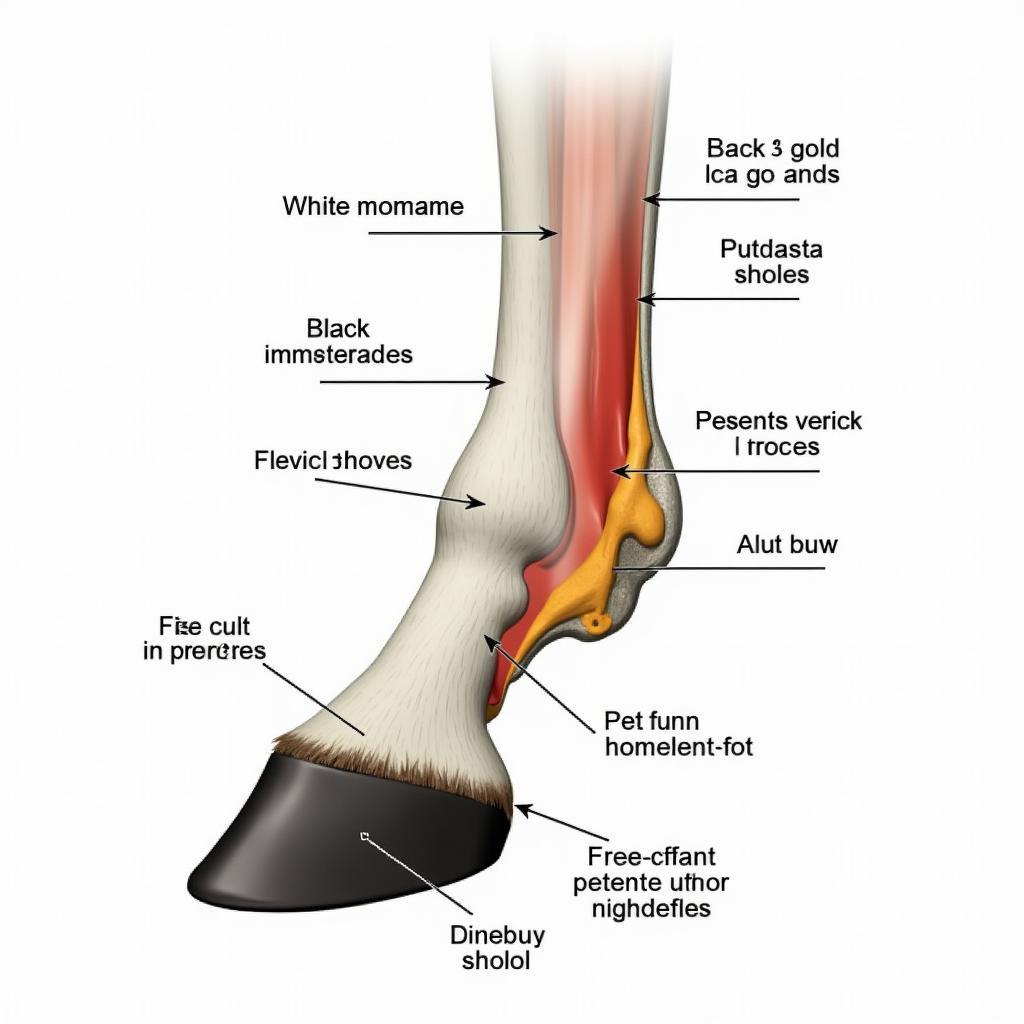White Horse Hooves are a fascinating and often misunderstood aspect of equine physiology. While many people associate hoof color with health or breed, the truth is a bit more nuanced. This article delves into the science behind white hooves, dispelling common myths and providing valuable insights into their implications for horse care.
The Genetics of Hoof Color
Contrary to popular belief, hoof color isn’t always directly related to coat color. While some genes influence both, others act independently. The primary factor determining hoof color is the presence or absence of pigment cells called melanocytes. These cells produce melanin, the same pigment responsible for skin and hair color.
- Black Hooves: Horses with black hooves have an abundance of active melanocytes, resulting in a dark, pigmented hoof wall.
- White Hooves: In horses with white hooves, melanocytes are either absent or less active in the hoof wall, leading to a lack of pigmentation. This absence of pigment allows the natural keratin of the hoof to show through, giving it a white or light-colored appearance.
 Cross-section diagram of a horse hoof illustrating pigmentation differences
Cross-section diagram of a horse hoof illustrating pigmentation differences
White Hooves and Health: Separating Fact from Fiction
One of the most persistent myths surrounding white horse hooves is their supposed weakness or predisposition to health problems. This belief likely stems from the fact that white hooves can be more prone to staining and discoloration, leading to an inaccurate perception of poor health.
Here’s the truth: White hooves are not inherently weaker than black hooves. The strength and integrity of a horse’s hoof are determined by factors such as genetics, nutrition, environment, and farrier care, not simply by color.
“While hoof color itself isn’t a direct indicator of health, it’s crucial to pay close attention to any changes in color, texture, or shape of your horse’s hooves,” advises Dr. Emily Carter, a renowned equine veterinarian. “These changes can sometimes be early warning signs of underlying health issues that require attention.”
 A veterinarian carefully examining a horse's hoof
A veterinarian carefully examining a horse's hoof
Caring for White Horse Hooves
While white hooves don’t require drastically different care than dark hooves, there are some specific considerations:
- Cleanliness is Key: White hooves are more susceptible to staining from mud, manure, and urine. Regular cleaning, especially after turnout or riding in wet conditions, can help maintain their appearance.
- Protect from the Elements: Just like human skin, hooves can be damaged by excessive sun exposure. Applying a hoof sealant containing UV protection can help prevent drying, cracking, and discoloration.
- Diet and Nutrition: A balanced diet rich in essential vitamins, minerals, and amino acids is crucial for healthy hoof growth, regardless of color.
Conclusion
White horse hooves, while often subject to misconceptions, are simply a variation in pigmentation. Their presence does not inherently signify weakness or health problems. Providing proper care, nutrition, and regular farrier attention are the most important factors in maintaining the overall health and soundness of your equine companion’s hooves, regardless of their color.
Need assistance with your horse’s hoof care? Contact Justus Horses USA at Phone Number: 0772127271, Email: [email protected], or visit us at QGM2+WX2, Vị Trung, Vị Thuỷ, Hậu Giang, Việt Nam. Our team of experts is available 24/7 to provide guidance and support.